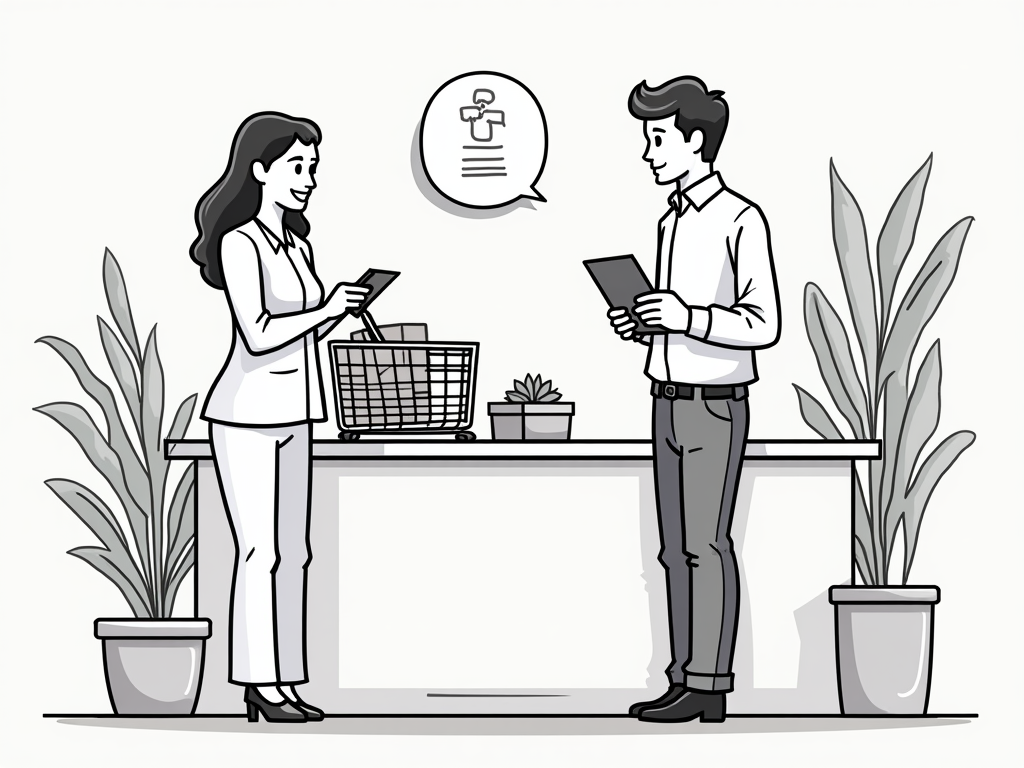
Do You Need an Accountant in Poland or Can You Do It Yourself?
Reading time: 12 minutes
Table of Contents
- Introduction: Navigating Polish Accounting Requirements
- DIY Accounting in Poland: What’s Involved
- When to Hire a Professional Accountant
- Cost Comparison: DIY vs. Hiring an Accountant
- Understanding Polish Accounting Legal Requirements
- Technology Solutions for Self-Managed Accounting
- Real-World Experiences: Case Studies
- Conclusion: Making the Right Choice
- Frequently Asked Questions
Introduction: Navigating Polish Accounting Requirements
Standing at the crossroads of DIY accounting and hiring a professional in Poland? You’re facing a decision that could significantly impact your business efficiency, compliance status, and ultimately, your peace of mind.
Poland’s accounting landscape presents a unique set of challenges—rigorous reporting requirements, frequently changing tax regulations, and document retention policies that might seem overwhelming at first glance. Whether you’re a solo entrepreneur, small business owner, or managing director of a growing company, the question remains the same: Can you handle Polish accounting requirements yourself, or do you need professional help?
The truth is, there’s no one-size-fits-all answer. Your optimal path depends on your business structure, transaction volume, comfort with financial matters, and available time. What works for a freelance graphic designer won’t necessarily suit an e-commerce business with international clients.
Let’s break down both approaches pragmatically, examining not just theoretical possibilities but practical realities of managing accounting obligations in the Polish business environment.
DIY Accounting in Poland: What’s Involved
Taking the accounting reins in Poland requires more than basic number-crunching skills. You’re signing up for regular engagement with a multi-faceted system that demands attention to detail and ongoing education.
Basic Requirements for Self-Managing Your Accounts
Before diving into DIY accounting, assess whether you have:
- At least intermediate Polish language skills (tax forms and regulations are primarily in Polish)
- 3-5 hours weekly to dedicate to bookkeeping tasks
- Willingness to stay current with tax law changes
- Basic understanding of accounting principles
- Comfort using digital accounting platforms
Let’s be straightforward: DIY accounting in Poland isn’t about cutting corners—it’s about strategic self-management.
Consider this scenario: You’re running a small consulting business with 5-10 clients monthly. Your operations are straightforward with minimal inventory and primarily service-based transactions. This simplified business model could be manageable without professional accounting help, provided you’re willing to learn the systems.
Common DIY Accounting Tasks in Poland
If you choose the self-managed route, prepare to handle:
- Monthly VAT declarations (JPK_VAT) – Due by the 25th of the following month
- Income tax advance payments – Usually monthly or quarterly depending on your tax regime
- Social security contributions (ZUS) – Monthly payments with strict deadlines
- Annual tax returns – Including PIT-36, PIT-36L, or CIT-8 depending on your business structure
- Invoice management – Proper issuance, recording, and storage
- Expense tracking – Including verification of tax-deductibility under Polish regulations
Pro Tip: Even if you choose DIY accounting, consider consulting with a professional during business setup and for your first annual filing. This creates a solid foundation and template for future independent work.
When to Hire a Professional Accountant
The decision to hire professional accounting help often comes down to recognizing specific triggers that signal increasing complexity in your financial management needs.
Clear Indicators You Need Professional Accounting Help
Consider hiring an accountant if:
- Your revenue exceeds 150,000 PLN annually (complexity typically increases)
- You have employees (payroll adds significant administrative burden)
- You’re engaged in cross-border transactions (EU and international tax implications)
- You operate in highly regulated sectors (requiring specialized knowledge)
- Your business is growing rapidly (scaling requires systematic financial oversight)
- You’ve experienced tax compliance issues previously
As Piotr Juszczyk, Tax Advisor at inFakt, notes: “Many entrepreneurs initially underestimate the time commitment of proper accounting compliance in Poland. What starts as a few hours weekly can quickly expand to become a part-time job itself, taking focus away from core business activities.”
Types of Accounting Services Available in Poland
Polish accounting services typically fall into several tiers:
- Basic Bookkeeping – Management of everyday transactions, invoicing, and record-keeping
- Tax Compliance – Preparation and submission of VAT returns, income tax calculations, and other tax obligations
- Full Accounting Services – Comprehensive financial management including reporting, tax optimization, and financial statement preparation
- Virtual CFO Services – Strategic financial planning, analysis, and business advisory
- Specialized Industry Accounting – Sector-specific expertise (e.g., IT, construction, e-commerce)
Quick Scenario: Imagine you’ve just won a significant contract requiring you to hire three employees and establish a small office. Suddenly, you’re managing payroll taxes, office expense deductions, asset depreciation, and expanded service delivery. This inflection point often signals the time to transition from DIY to professional accounting support.
Cost Comparison: DIY vs. Hiring an Accountant
Understanding the true cost implications of both approaches requires looking beyond the obvious expenses to consider opportunity costs and potential risks.
| Cost Factor | DIY Accounting | Professional Accountant | Key Considerations |
|---|---|---|---|
| Direct Monthly Cost | 100-300 PLN (software costs) | 350-1,500+ PLN (depends on business complexity) | Costs scale with transaction volume and business complexity |
| Time Investment | 15-20 hours monthly | 1-2 hours monthly coordination | Consider your hourly business value |
| Error Risk Cost | High (potential penalties) | Low (most accountants offer liability protection) | Tax errors can result in 8% to 30% penalties plus interest |
| Tax Optimization | Limited (depends on self-knowledge) | Typically higher (professional expertise) | Strategic planning can often offset accounting fees |
| Scaling Costs | Exponential (as complexity grows) | Linear (incremental increases with volume) | Consider your growth trajectory when deciding |
According to a 2023 survey by the Polish Association of Entrepreneurs, businesses with annual revenue below 100,000 PLN saved an average of 3,600 PLN annually with DIY accounting, while those exceeding 500,000 PLN actually lost an average of 12,000 PLN annually when accounting for tax optimization opportunities missed and time investment.
The calculus isn’t just financial—it’s also psychological. As Maria Kowalska, founder of Warsaw-based TechStart Studio shares: “I spent my first year handling accounting myself, staying up late every month to meet filing deadlines. The stress affected my client work. Hiring an accountant actually improved our service quality because I could focus entirely on core business activities.”
Understanding Polish Accounting Legal Requirements
Polish accounting regulations combine local requirements with EU directives, creating a comprehensive framework that demands rigorous compliance.
Key Legal Obligations for Different Business Types
The specific requirements vary based on your business structure:
- Sole Proprietors (Jednoosobowa działalność gospodarcza)
- Can use simplified accounting (księga przychodów i rozchodów or KPiR)
- Monthly or quarterly reporting depending on size
- Annual income tax returns
- JPK_VAT (Standard Audit File for Tax) submissions if VAT-registered
- Limited Liability Companies (Spółka z o.o.)
- Require full accounting (księgi rachunkowe)
- Monthly VAT and advance corporate tax payments
- Annual financial statements
- Corporate income tax returns
- Financial statements submitted to National Court Register (KRS)
- Partnerships and Other Entities
- Requirements vary based on partnership type and revenue thresholds
- Most require at minimum KPiR accounting
Well, here’s the straight talk: Non-compliance isn’t merely a theoretical risk—it’s a practical liability that can halt your business operations. In 2022, Polish tax authorities conducted over 3,000 tax audits of small businesses, with average penalties for documentation errors exceeding 8,000 PLN.
Record-Keeping and Documentation Requirements
Regardless of who manages your accounting, you must maintain:
- Invoicing records – All issued and received invoices (5-year retention period)
- Bank statements – Complete records of all business transactions
- Expense documentation – Original receipts and justification for business purpose
- Asset registers – Records of business equipment and depreciation schedules
- Employee documentation – If applicable, including employment contracts and payroll records
If managing these yourself, develop systematic filing systems—physical or digital—that will withstand potential tax office scrutiny. A standardized naming convention and monthly verification process can prevent the common pitfall of misplaced documentation.
Technology Solutions for Self-Managed Accounting
The right technology can significantly reduce the burden of DIY accounting in Poland, though it cannot eliminate the need for fundamental financial knowledge.
Polish-Specific Accounting Software Options
Several platforms cater specifically to the Polish market:
- inFakt – User-friendly interface with automatic JPK_VAT generation and invoice management
- wFirma – Comprehensive tool with tax calculations and built-in e-filing capabilities
- iFirma – Streamlined solution popular among freelancers and micro-enterprises
- Taxeo – Simplified bookkeeping with strong technical support
- Comarch ERP XT – More advanced platform for growing businesses
Most platforms offer free trials, allowing you to test functionality before committing. Prioritize solutions that offer:
- Polish-language interface and customer support
- Direct integration with Ministerstwo Finansów (Ministry of Finance) systems
- Automatic JPK file generation
- Tax calculation features specific to Polish regulations
- Cloud-based access for collaboration
Practical Roadmap: If you’re leaning toward DIY accounting, start with a 3-month test period using accounting software alongside professional support. This hybrid approach allows you to learn the systems with a safety net before deciding if full self-management is viable.
Integration with Polish Tax Systems
Poland has progressively digitized its tax administration, requiring electronic submission of:
- JPK_VAT files (combining VAT returns and records)
- Electronic invoices (increasingly mandatory)
- ZUS contributions through the PUE ZUS platform
- Annual tax returns via the e-Deklaracje system
Each system typically requires:
- Digital signature (podpis kwalifikowany) or trusted profile (profil zaufany)
- Registration in respective government platforms
- Understanding of file format requirements
Pro Tip: Even with the best software, allocate time to understand these government platforms directly. Their interfaces change periodically, and technical requirements evolve with regulatory updates.
Real-World Experiences: Case Studies
Abstract principles become clearer through concrete examples. Let’s explore how real businesses navigated this decision:
Case Study 1: Jan’s Consulting Practice
Jan started a business consulting practice in Kraków, generating approximately 12,000 PLN monthly with 8-10 regular clients.
Initial Approach: Managed all accounting himself using wFirma software (200 PLN monthly subscription), dedicating approximately 5 hours weekly to bookkeeping tasks.
Challenges Faced:
- Repeatedly missed optimal VAT settlement periods
- Struggled with classifying certain international client payments
- Encountered JPK_VAT validation errors requiring time-consuming corrections
- Experienced high stress during tax filing periods
Solution: After 9 months, Jan hired a part-time accountant (600 PLN monthly) who identified several missed tax deductions and optimized his business structure, ultimately saving him approximately 9,000 PLN annually while freeing up 20+ hours monthly.
Key Insight: “What I thought was saving money was actually costing me both financially and in terms of opportunity cost. The time I reclaimed allowed me to acquire two major clients I wouldn’t have had capacity for otherwise.”
Case Study 2: Marta’s E-Commerce Store
Marta operates a growing online store selling Polish handicrafts internationally, with annual revenue of approximately 800,000 PLN.
Initial Approach: Hired a full-service accounting firm from day one (1,500 PLN monthly).
Development: As her business grew, Marta implemented a hybrid model:
- Brought day-to-day bookkeeping in-house using dedicated software
- Hired a part-time bookkeeper (15 hours weekly)
- Retained the accounting firm for quarterly reviews, complex transactions, and annual filings
Results: This balanced approach reduced monthly accounting costs to approximately 900 PLN while maintaining compliance and allowing for strategic financial planning during expansion.
Key Insight: “The hybrid model gave us financial control without sacrificing expertise. We learned what to manage internally and what to outsource, scaling our approach as the business grew.”
Conclusion: Making the Right Choice
The decision between DIY accounting and professional help in Poland ultimately hinges on your specific business situation, growth trajectory, and personal capacity. Here’s a framework for making this decision strategically:
Consider DIY accounting if:
- Your business has simple operations with limited transaction volume
- You have some financial background or strong interest in learning accounting
- You operate a micro-enterprise with revenue under 100,000 PLN annually
- You have time available to dedicate to financial management
- Your business has minimal cross-border or complex transactions
Consider professional help if:
- Your business is growing rapidly or already has substantial revenue
- You have employees or complex payroll requirements
- You operate in multiple jurisdictions or have international clients
- Your time is better invested in core business activities
- You’ve experienced compliance challenges or tax uncertainties
- Your business structure is complex (e.g., sp. z o.o. rather than sole proprietorship)
Many successful Polish entrepreneurs find that a phased approach works best—starting with professional help to establish systems, learning the basics alongside experts, then gradually taking on more responsibility as comfort and knowledge increase.
Remember that this isn’t an irreversible decision. As your business evolves, your accounting needs will too. The most successful approach maintains flexibility and regular reassessment of whether your current solution still serves your business objectives.
Ready to transform accounting complexity into a strategic advantage for your Polish business venture? The right choice isn’t about following conventions—it’s about aligning financial management with your specific business reality.
Frequently Asked Questions
What are the penalties for accounting errors in Poland?
Penalties vary based on the nature and severity of errors. Minor filing delays typically incur interest charges (currently 8% annually), while significant errors can result in penalties ranging from 5% to 30% of the underreported tax amount. Deliberate tax evasion may lead to criminal charges with potential fines up to 21,600,000 PLN and even imprisonment in severe cases. Having professional accounting support typically provides some liability protection, as established accounting firms often take responsibility for errors made under their supervision.
Can I switch between DIY and professional accounting during the fiscal year?
Yes, you can switch approaches mid-year, though transitions are smoother at month or quarter boundaries. When transitioning to professional help, expect to provide complete documentation for the current fiscal year to date. The accountant will typically perform a thorough review to ensure compliance before taking over. When moving from professional help to DIY, request detailed handover documentation including filing histories, account access credentials, and upcoming obligations. Some accountants offer transition services with graduated support to ensure continuity during the change.
What accounting qualifications should I look for when hiring in Poland?
In Poland, look for accountants with recognized credentials such as “Certyfikowany Księgowy” (Certified Accountant) issued by the Accountants Association in Poland (SKwP), “Doradca Podatkowy” (Tax Advisor) licensed by the Ministry of Finance, or “Biegły Rewident” (Statutory Auditor) for more complex needs. Beyond formal qualifications, prioritize accountants with specific experience in your industry sector and business size. For international businesses, look for professionals with English language proficiency and experience with cross-border transactions. Request references from similar businesses and validate their understanding of your specific tax situation during initial consultations.






